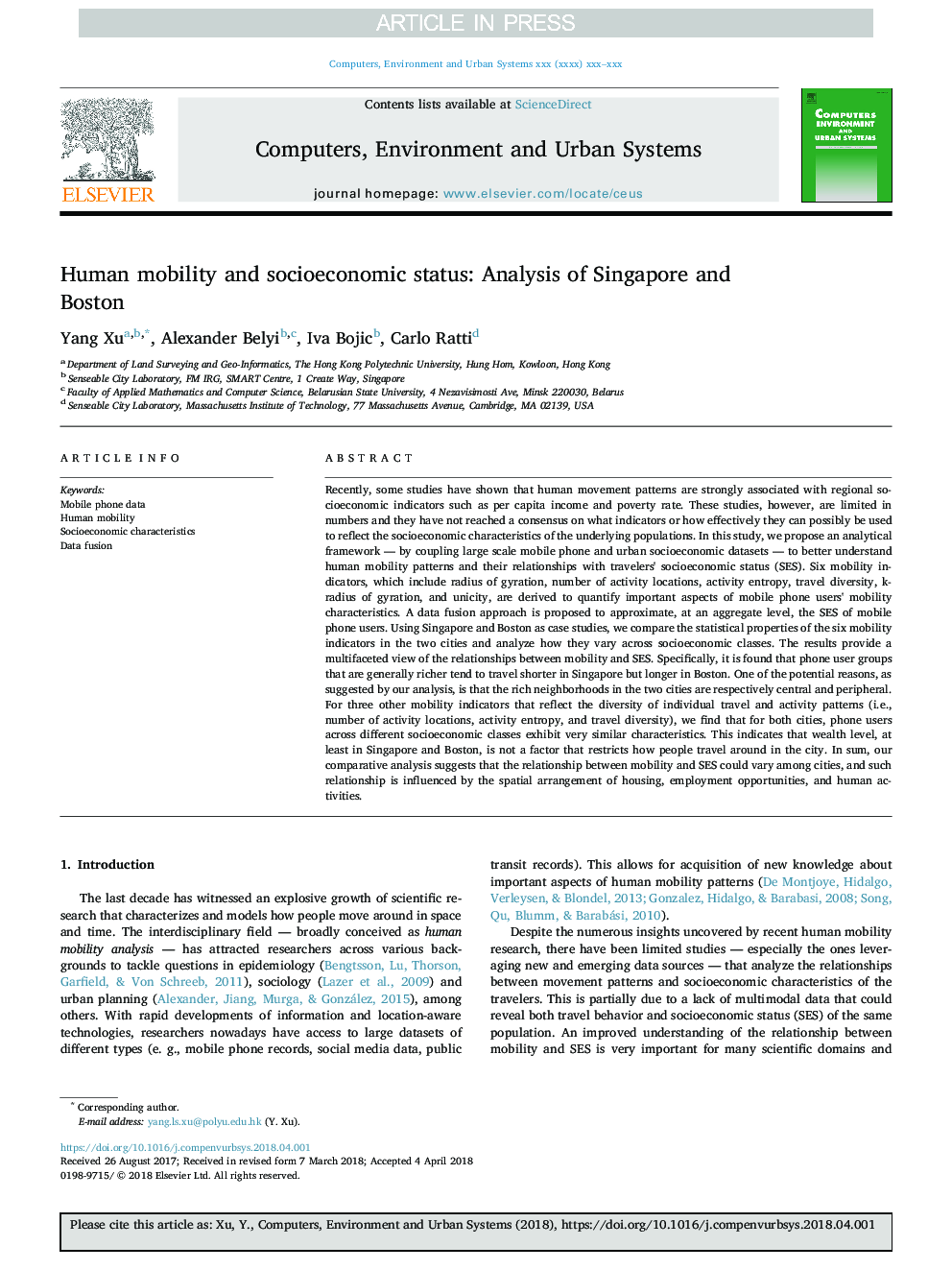| کد مقاله | کد نشریه | سال انتشار | مقاله انگلیسی | نسخه تمام متن |
|---|---|---|---|---|
| 10151458 | 1666125 | 2018 | 17 صفحه PDF | دانلود رایگان |
عنوان انگلیسی مقاله ISI
Human mobility and socioeconomic status: Analysis of Singapore and Boston
ترجمه فارسی عنوان
تحرک انسانی و وضعیت اجتماعی و اقتصادی: تجزیه و تحلیل سنگاپور و بوستون
دانلود مقاله + سفارش ترجمه
دانلود مقاله ISI انگلیسی
رایگان برای ایرانیان
کلمات کلیدی
اطلاعات تلفن همراه، تحرک بشر، خصوصیات اجتماعی و اقتصادی، همجوشی داده ها،
موضوعات مرتبط
مهندسی و علوم پایه
مهندسی کامپیوتر
نرم افزارهای علوم کامپیوتر
چکیده انگلیسی
Recently, some studies have shown that human movement patterns are strongly associated with regional socioeconomic indicators such as per capita income and poverty rate. These studies, however, are limited in numbers and they have not reached a consensus on what indicators or how effectively they can possibly be used to reflect the socioeconomic characteristics of the underlying populations. In this study, we propose an analytical framework - by coupling large scale mobile phone and urban socioeconomic datasets - to better understand human mobility patterns and their relationships with travelers' socioeconomic status (SES). Six mobility indicators, which include radius of gyration, number of activity locations, activity entropy, travel diversity, k-radius of gyration, and unicity, are derived to quantify important aspects of mobile phone users' mobility characteristics. A data fusion approach is proposed to approximate, at an aggregate level, the SES of mobile phone users. Using Singapore and Boston as case studies, we compare the statistical properties of the six mobility indicators in the two cities and analyze how they vary across socioeconomic classes. The results provide a multifaceted view of the relationships between mobility and SES. Specifically, it is found that phone user groups that are generally richer tend to travel shorter in Singapore but longer in Boston. One of the potential reasons, as suggested by our analysis, is that the rich neighborhoods in the two cities are respectively central and peripheral. For three other mobility indicators that reflect the diversity of individual travel and activity patterns (i.e., number of activity locations, activity entropy, and travel diversity), we find that for both cities, phone users across different socioeconomic classes exhibit very similar characteristics. This indicates that wealth level, at least in Singapore and Boston, is not a factor that restricts how people travel around in the city. In sum, our comparative analysis suggests that the relationship between mobility and SES could vary among cities, and such relationship is influenced by the spatial arrangement of housing, employment opportunities, and human activities.
ناشر
Database: Elsevier - ScienceDirect (ساینس دایرکت)
Journal: Computers, Environment and Urban Systems - Volume 72, November 2018, Pages 51-67
Journal: Computers, Environment and Urban Systems - Volume 72, November 2018, Pages 51-67
نویسندگان
Yang Xu, Alexander Belyi, Iva Bojic, Carlo Ratti,
